
I prayed in the cathedral of Notre Dame five hours before it burned.
David and I were gifted a trip to Paris last April by our son and his wife. Although I was a French major and a French teacher, I had never been able to afford to go to France. My parents moved during my sophomore year of college, so I became an out-of-state student and had to move to South Carolina the year that I would have spent abroad. We did not have the money to go to Europe, and after I married, David and I could not afford to travel, either. The trip from our kids was a dream come true.
 We arrived in Paris on a Sunday and had only a few hours of daylight left. We opted to go for something simple, the Eiffel Tower, which became suddenly complicated when we got lost coming back to our hotel and just barely thwarted a pickpocketing attempt on the Métro. Just a few seconds and a young teenager had worked through two zipper compartments on my purse, which was under my coat. I felt a light bump and grabbed her wrist just in time to pull my wallet and passport out of her hand.
We arrived in Paris on a Sunday and had only a few hours of daylight left. We opted to go for something simple, the Eiffel Tower, which became suddenly complicated when we got lost coming back to our hotel and just barely thwarted a pickpocketing attempt on the Métro. Just a few seconds and a young teenager had worked through two zipper compartments on my purse, which was under my coat. I felt a light bump and grabbed her wrist just in time to pull my wallet and passport out of her hand.
 After a good night’s sleep, Monday was going to be a much better day. We got oriented, had breakfast at a lovely neighborhood café, and braved the Métro once again. First on the agenda was the greatest landmark I had ever wanted to see, Notre Dame Cathedral. We came out of the underground station beside the Seine. This was the Paris of my dreams. I had studied Paris for so long, even taught about her beauties, and here we were. We crossed one of the many bridges and walked onto the Île de la Cité. Where was it? Where was it? We kept walking and I saw a peek of the spire, then around the corner, and there she was: the towers, the flying buttresses, the rose windows, the gargoyles, all the pictures I had ever pored over right in front of me. One thing that you don’t see in the guidebook photos is the huge crowd surrounding every single landmark in the city. It was eleven o’clock in the morning, and we waited in line for an hour to get inside.
After a good night’s sleep, Monday was going to be a much better day. We got oriented, had breakfast at a lovely neighborhood café, and braved the Métro once again. First on the agenda was the greatest landmark I had ever wanted to see, Notre Dame Cathedral. We came out of the underground station beside the Seine. This was the Paris of my dreams. I had studied Paris for so long, even taught about her beauties, and here we were. We crossed one of the many bridges and walked onto the Île de la Cité. Where was it? Where was it? We kept walking and I saw a peek of the spire, then around the corner, and there she was: the towers, the flying buttresses, the rose windows, the gargoyles, all the pictures I had ever pored over right in front of me. One thing that you don’t see in the guidebook photos is the huge crowd surrounding every single landmark in the city. It was eleven o’clock in the morning, and we waited in line for an hour to get inside.
 When we finally stepped into the dim interior of the church, it was as awe-inspiring as I had dreamed. The soaring ceilings drew the gaze up and up, and we were surrounded by some of the world’s greatest paintings and sculptures. We walked all around the perimeter of the church, snapping photos and taking in the rose windows and altar pieces, maintaining the hushed silence of all the people, the main sound being the swish of slow footsteps. Once we had been around the church walls, we went into the roped-off center seats “reservées pour les fidèles,” reserved for the faithful. We were fidèles, so we quietly walked up to an empty row to pray.
When we finally stepped into the dim interior of the church, it was as awe-inspiring as I had dreamed. The soaring ceilings drew the gaze up and up, and we were surrounded by some of the world’s greatest paintings and sculptures. We walked all around the perimeter of the church, snapping photos and taking in the rose windows and altar pieces, maintaining the hushed silence of all the people, the main sound being the swish of slow footsteps. Once we had been around the church walls, we went into the roped-off center seats “reservées pour les fidèles,” reserved for the faithful. We were fidèles, so we quietly walked up to an empty row to pray.

We had not found Parisian people to be hostile, as some people assert. Rather, our experience was very pleasant. All of the French people with whom we spoke were polite and helpful, although their manner was more reserved than that of the average American. However, France is an undoubtedly, almost aggressively, secular country. Surrounded by sacred art on every side, in a town that closes up firmly every Sunday, there is no room for public expressions of piety. A perfect example is the Panthéon, which began construction as a Christian cathedral dedicated to St. Geneviève, the patron saint of Paris, and quickly transitioned to a paean to art and reason during the French Revolution. The suppression of spiritual devotion is almost palpable.
 With this in mind, we became ever more aware that the people in the cathedral were viewing it as an historical monument, rather than a living church. There were only a couple dozen of us in the roped-off section, with rows and rows of empty seats. I like to imagine that they have greater attendance during mass. We spent some time in prayer, took in the view from what the builders would have considered the typical church-goers’ perspective, and then moved out to walk all the way around the famous exterior.
With this in mind, we became ever more aware that the people in the cathedral were viewing it as an historical monument, rather than a living church. There were only a couple dozen of us in the roped-off section, with rows and rows of empty seats. I like to imagine that they have greater attendance during mass. We spent some time in prayer, took in the view from what the builders would have considered the typical church-goers’ perspective, and then moved out to walk all the way around the famous exterior.


We strolled around the side of the building with rows of ridiculously fragile-looking flying buttresses, spring flowers blooming riotously all around. We passed a wedding photo shoot among the blossoms while fully-armed gendarmes strode by, fingers on their triggers. The back of the cathedral was covered with scaffolding, and we regretted that its beauty was blurred by metal grids.

 After tearing ourselves away from the church, we crossed a bridge over to the Latin Quarter, where we spent the rest of the afternoon tracing the steps of famous authors and artists, beginning at Shakespeare & Company and ending at the Panthéon. This is old Paris, with narrow cobbled streets twisting in every direction and café-goers sitting out on the sidewalks. Oh, to live that day again! So rich.
After tearing ourselves away from the church, we crossed a bridge over to the Latin Quarter, where we spent the rest of the afternoon tracing the steps of famous authors and artists, beginning at Shakespeare & Company and ending at the Panthéon. This is old Paris, with narrow cobbled streets twisting in every direction and café-goers sitting out on the sidewalks. Oh, to live that day again! So rich.



When we were completely exhausted and ready to get back to our hotel in northern Paris, we crossed the Île de la Cité once again from south to north, walking along the back of Notre Dame, admiring her and sharing our happiness at having fulfilled a lifelong dream. It was just after five o’clock.

We found the Métro entrance and made our way back to our hotel, and then to a café at the top of the Rue de Moscou.
We had just put in our order when my phone rang. It was my sister, vacationing in Myrtle Beach.
“Are you alright? Where are you?” she asked frantically.
“We’re in Paris, in a café. Why?”
“There’s a fire in Notre Dame. Are you near there?”
“No, not now. But we were there earlier today.”
She was relieved, but cautioned us not to go near it. I told David what she had said, and we assumed that it was a small fire that would be extinguished soon, since the local fire departments would surely move heaven and earth to preserve this beloved landmark.
The café owner came over to deliver our food, and when we asked him if he had heard that Notre Dame was on fire, his response was curious. He held up a cautious hand and said in French, “Don’t worry. It’s just a fire.” Just a fire? Haltingly, I tried to express how sad it was, and he replied, “Ah, oui. C’est triste.” Later, we could only surmise that he didn’t want any panicked Americans in his café screaming about terrorism.
Then my phone rang again. This time, it was my daughter-in-law. She was frantic and had the same questions as my sister. We reassured her and our son, ate our dinner, and returned to our hotel.


The small lobby on the side had a big-screen TV. It was a wall of fire. Until that moment, we had had no idea that the entire cathedral was engulfed in flame. We hurried upstairs to our room and turned on the local news. I was shaking. When we saw the spire fall in, I felt physically sick and started sobbing. I felt as if western civilization had crumbled. I called my brother, who is a medieval scholar, and tried to tell him what was happening. He had no idea, and I just kept weeping, “It’s gone! I just saw it this morning, and now it’s gone!” He was devastated.



 Underneath the crushing sorrow was the overwhelming sense that I had received an incredible gift of grace from God. For sixty years, I had longed to see Notre Dame cathedral, and I had been granted that gift. I felt so unworthy that I wanted to lie prostrate on the floor, and at the same time I told myself that that was ridiculous, and that there were countless numbers of people who would never see her now, since the reconstruction could last a lifetime, and who knows what treasures were lost forever? Although the French government may truly hasten the repairs and billionaires from around the world may pour in their donations, the church will probably not be complete in my lifetime, and when it is complete, it will not be the same cathedral as it was. Besides, I will probably never be able to afford to go to France again.
Underneath the crushing sorrow was the overwhelming sense that I had received an incredible gift of grace from God. For sixty years, I had longed to see Notre Dame cathedral, and I had been granted that gift. I felt so unworthy that I wanted to lie prostrate on the floor, and at the same time I told myself that that was ridiculous, and that there were countless numbers of people who would never see her now, since the reconstruction could last a lifetime, and who knows what treasures were lost forever? Although the French government may truly hasten the repairs and billionaires from around the world may pour in their donations, the church will probably not be complete in my lifetime, and when it is complete, it will not be the same cathedral as it was. Besides, I will probably never be able to afford to go to France again.
Here is the truth: if I had waited until another week to go to Paris, or if I had placed it on another day of our itinerary for the week, I would never have seen Notre Dame in my life. I am so, so grateful to God for those few precious hours.
_____________________
Ken Follett, who knows a thing or two about cathedrals and was greatly moved by the destruction, has written a little book called Notre Dame. You can read a quick review on my blog www.EatReadSleep.com. All proceeds go to a fund for the renovation.
 My husband actually read this one, but he read so much of it aloud to me and we discussed it so thoroughly that I feel as though I read it myself. Based on the PBS television show of the same name, the book’s subtitle, Why Working with Our Hands Gives Us Meaning, was the catalyst for me to bring it home from the library for David.
My husband actually read this one, but he read so much of it aloud to me and we discussed it so thoroughly that I feel as though I read it myself. Based on the PBS television show of the same name, the book’s subtitle, Why Working with Our Hands Gives Us Meaning, was the catalyst for me to bring it home from the library for David.
 Working with one’s hands does absorb the same time that could be used for reading and writing, and I am only so fond of audiobooks, so I will have to take that into consideration in the future. However, David and I both found that handcrafts moved us away from technology and slowed our thinking in ways that were healthy for us. We both believe that God created people in his own image, and part of that image is our innate desire to be sub-creators, as Tolkien expressed it. The growing joy that one feels as a project begins to take shape under our hands, gradually assuming the image that we had in our minds, is a delight that makes us return to our craft again and again. Each time, we also have grown and learned new skills and are able to bring more complex and beautiful works into being. A bit of ourselves is woven into each product, and inanimate objects take on meaning that survives beyond our human lives.
Working with one’s hands does absorb the same time that could be used for reading and writing, and I am only so fond of audiobooks, so I will have to take that into consideration in the future. However, David and I both found that handcrafts moved us away from technology and slowed our thinking in ways that were healthy for us. We both believe that God created people in his own image, and part of that image is our innate desire to be sub-creators, as Tolkien expressed it. The growing joy that one feels as a project begins to take shape under our hands, gradually assuming the image that we had in our minds, is a delight that makes us return to our craft again and again. Each time, we also have grown and learned new skills and are able to bring more complex and beautiful works into being. A bit of ourselves is woven into each product, and inanimate objects take on meaning that survives beyond our human lives.


 “Is it true that Alley Cat is your brother?” the older blonde girl demanded breathlessly.
“Is it true that Alley Cat is your brother?” the older blonde girl demanded breathlessly.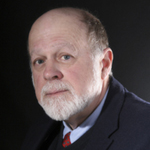
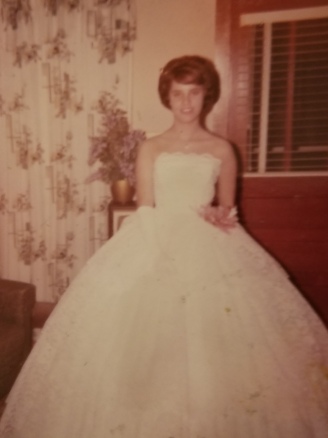 Next door to us in Milledgeville lived a pair of twins, Alice and Ellen. As teenaged girls, they were like Patty and her cousin Cathy on the Patty Duke Show, for those of you old enough to understand that reference. Alice lived out loud, partying and having fun. Ellen was everything refined and lovely, just what an upper-crust parent would desire.
Next door to us in Milledgeville lived a pair of twins, Alice and Ellen. As teenaged girls, they were like Patty and her cousin Cathy on the Patty Duke Show, for those of you old enough to understand that reference. Alice lived out loud, partying and having fun. Ellen was everything refined and lovely, just what an upper-crust parent would desire.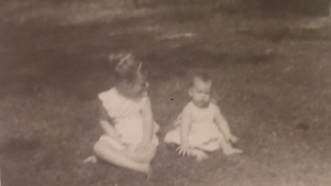 And then we were three.
And then we were three.


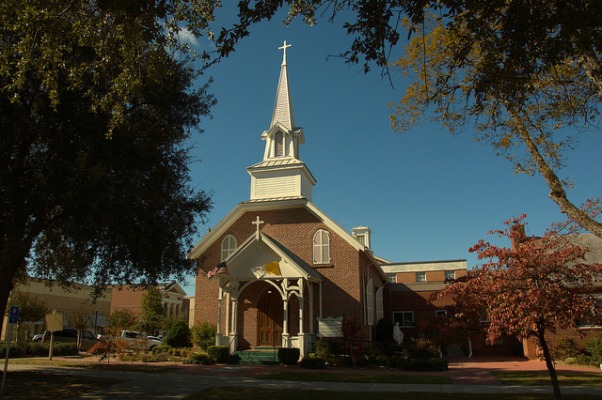 Scientists tell us that the most powerful trigger of memory is the sense of smell. When I catch a hint of a certain aroma, it transports me back to my childhood at Sacred Heart Catholic Church in Milledgeville. It’s a warm combination of beeswax, old wood polished many times, dust in the carpet, and a lingering vapor of incense. To me, it is the smell of holiness.
Scientists tell us that the most powerful trigger of memory is the sense of smell. When I catch a hint of a certain aroma, it transports me back to my childhood at Sacred Heart Catholic Church in Milledgeville. It’s a warm combination of beeswax, old wood polished many times, dust in the carpet, and a lingering vapor of incense. To me, it is the smell of holiness. A year or so ago, my brother and I had a day together in Manhattan, and we trekked down to the 9-11 Memorial and St. Paul’s Chapel, and then we went further down the island to the oldest church in New York, Trinity Episcopal on Wall Street. Whereas St. Paul’s Chapel is more tourist site than church these days, Trinity was quiet and filled with worshipers. We strolled the historic graveyard and quietly admired the beautiful architecture and pipe organ in the sanctuary. Off to the side, there is a little chapel room with a sign asking for complete silence. I sat down and spent a little time with others in prayer and meditation. Coming out, I saw a bank of glowing red votives. I lit a candle.
A year or so ago, my brother and I had a day together in Manhattan, and we trekked down to the 9-11 Memorial and St. Paul’s Chapel, and then we went further down the island to the oldest church in New York, Trinity Episcopal on Wall Street. Whereas St. Paul’s Chapel is more tourist site than church these days, Trinity was quiet and filled with worshipers. We strolled the historic graveyard and quietly admired the beautiful architecture and pipe organ in the sanctuary. Off to the side, there is a little chapel room with a sign asking for complete silence. I sat down and spent a little time with others in prayer and meditation. Coming out, I saw a bank of glowing red votives. I lit a candle.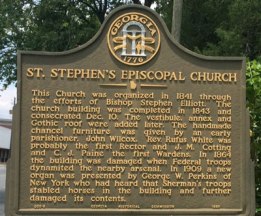
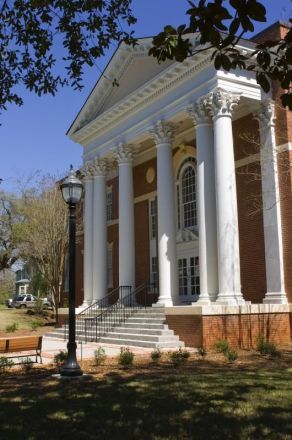 Not long afterward, my friend Dee’s mom took us to the library downtown. Dee Hammond and I had met because our mothers found out that we had both had benign tumors that had been removed when we were toddlers. Had Dee been a child today, she would have proudly displayed the Potteresque scar on her forehead, but as it was, she daintily covered it with a fringe of bangs. The public library was located in an imposing Greek Revival building on the campus of the Georgia Women’s College, and as we walked into the children’s section, Dee went to the picture books and I went to the chapter books.
Not long afterward, my friend Dee’s mom took us to the library downtown. Dee Hammond and I had met because our mothers found out that we had both had benign tumors that had been removed when we were toddlers. Had Dee been a child today, she would have proudly displayed the Potteresque scar on her forehead, but as it was, she daintily covered it with a fringe of bangs. The public library was located in an imposing Greek Revival building on the campus of the Georgia Women’s College, and as we walked into the children’s section, Dee went to the picture books and I went to the chapter books.
 I was four years old when I first wandered alone on the streets of downtown Milledgeville, Georgia, in the early sixties. My sister, Karen, was newborn and probably lying on a blanket on the front seat of my mother’s car, while I was standing up in the middle of the back seat, decked out in a black leotard and tights, with maybe an armrest between me and the windshield, because that was just the edgy sort of life we lived in those days. When we arrived at the ballet studio, my mother could not leave Karen in the car, so she dropped me off on the sidewalk in front of the staircase that led to the second-floor business. I climbed up to the landing at the top, only to read a note on the door that announced that the teacher had had a family emergency, and that class was canceled. I fled back down the stairs, but my mother was gone. Since cell phones only existed in science fiction novels at the time, I sat down on the bottom step and started to cry.
I was four years old when I first wandered alone on the streets of downtown Milledgeville, Georgia, in the early sixties. My sister, Karen, was newborn and probably lying on a blanket on the front seat of my mother’s car, while I was standing up in the middle of the back seat, decked out in a black leotard and tights, with maybe an armrest between me and the windshield, because that was just the edgy sort of life we lived in those days. When we arrived at the ballet studio, my mother could not leave Karen in the car, so she dropped me off on the sidewalk in front of the staircase that led to the second-floor business. I climbed up to the landing at the top, only to read a note on the door that announced that the teacher had had a family emergency, and that class was canceled. I fled back down the stairs, but my mother was gone. Since cell phones only existed in science fiction novels at the time, I sat down on the bottom step and started to cry.